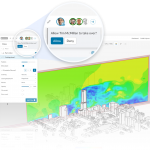In recent years, there has been a significant push towards precision automation and multi-axis motion, as more industries try to attain a higher level of precision and accuracy, while still increasing productivity and quality. Close harmony between the mechanics, control architecture and peripheral devices of a system is key to achieving these goals, whether the task in hand is to manufacture a part, assemble a machine, or carry out quality control checks on a finished product. Incorporating real-time networks and sophisticated control algorithms can also contribute to efficiency but, ultimately, the choice of precision technology comes down to the application.One of the most flexible options to support automated applications across a range of industries, particularly those where access could be an issue, is the use of hexapods. These standalone multi-axis positioning systems can be used for precision positioning in six degrees of freedom, and offer excellent performance in terms of dynamics, simple design, control, flexibility and compactness. This makes them ideal for the most complex alignment tasks, such as the production and testing of high- end imaging systems, precision manufacturing in the automotive and aerospace sector, and the packaging and probing of fibre couple devices.
For applications that need vibration-free motion, a constant velocity and optimum angular repeatability, air bearing technologies are the best choice in terms of the flatness and straightness of travel. Air bearing stages provide many advantages over traditional cross-roller or recirculating ball bearings; the moving platform – whether it’s a linear stage, a rotary stage or just a spindle – floats on a very thin layer of air, making the transition much smoother, preventing wear and tear, and avoiding the usual irregularities that are associated with a mechanical system.
In contrast, a multi-axis stage driven by motion control software is the best approach when motion must be synchronised with peripheral devices, including lasers, cameras and partshandling equipment. Intelligent software algorithms can also be employed to remove instability, such as positional jitter, helping to optimise the tuning of the mechanics.
In summary, there are a number of technological options that can achieve higher precision, path accuracy and repeatability for cutting-edge applications. The choice of method depends largely on the task but, overall, precision motion is set to make a valuable contribution to the future of industrial automation in numerous sectors.
To find out about PI’s precision automation workshops, go to https://bit.ly/PI-UK-Precision-Automation








